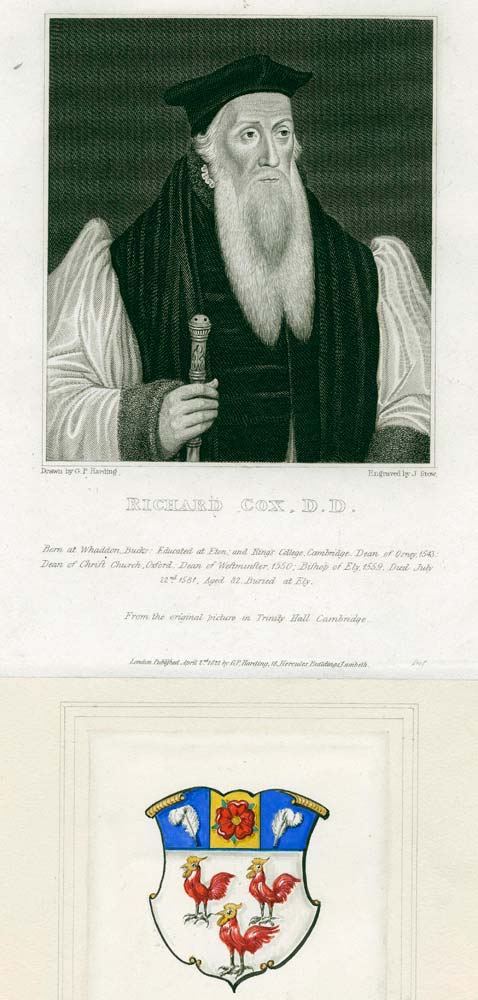Richard Courtenay
The grave of Richard Courtenay, bishop of Norwich, was re-discovered in October 1953 in the chapel of St Edward the Confessor in Westminster Abbey. A small hole in the floor at the base of the northern turret of Henry V's Chantry was discovered with a cavity beneath and on excavation the skeleton of a man of six feet in height was found in a stone lined grave, with a crozier and a gold ring set with an oval ruby in the grave. The grave had been disturbed, probably when the Chantry was built.
The body was left in situ with the crozier but the ring, hinged to hold a small relic within, is on display in the new Queen's Diamond Jubilee Galleries in the Abbey triforium.
Richard was a son of Sir Philip Courtenay of Powderham Castle in Devon and his wife Anne. Sir Philip was a son of Hugh, Earl of Devon and Margaret de Bohun, a granddaughter of Edward I. Richard's uncle was Archbishop William Courtenay. He was ordained a priest in 1400, with a papal dispensation due to his youth. He was later Dean of Wells, Chancellor of Oxford university and bishop of Norwich. Henry V appointed him keeper of his jewels and treasurer of the chamber. He was a trusted counsellor and friend of the king. He went to France in 1415 and died of illness at the seige of Harfleur. The king had him buried in the Abbey.
Further reading
Oxford Dictionary of National Biography
"Recollections of a Westminster Antiquary" by Lawrence Tanner, 1969, describes the discovery
Powderham Castle is open to the public

This image can be purchased from Westminster Abbey Library
Image © 2024 Dean and Chapter of Westminster









